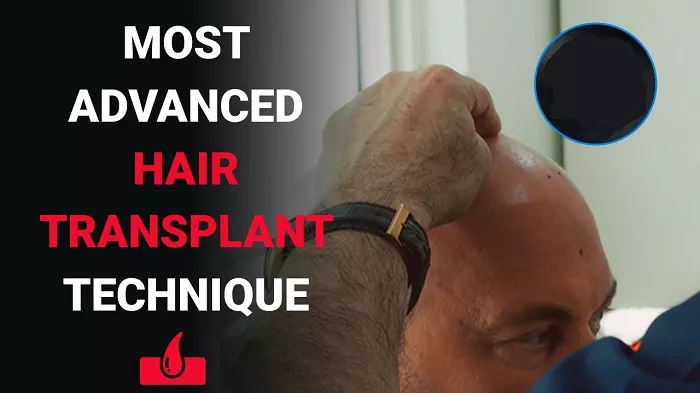Hair restoration has evolved significantly, offering individuals experiencing hair loss a range of advanced solutions. In 2025, the field of hair transplantation has seen remarkable innovations, combining technology and medical expertise to deliver natural-looking results with minimal invasiveness. This article explores the most advanced hair transplant techniques available today, providing insights into their procedures, benefits, and complementary non-surgical facial rejuvenation treatments.
What is Hair Transplantation
Hair transplantation involves relocating hair follicles from a donor area (typically the back or sides of the scalp) to areas experiencing hair loss. The goal is to achieve a fuller, natural-looking head of hair. Advancements in technology have refined these procedures, enhancing precision, reducing recovery time, and improving overall outcomes.
Most Advanced Hair Transplant Techniques in 2025
1. Robotic-Assisted Follicular Unit Extraction (FUE)
Robotic-assisted FUE utilizes artificial intelligence and robotics to enhance the precision of follicle extraction and implantation. Systems like the ARTAS iX and HARRTS FUEsion X 5.0 combine AI, robotics, and augmented reality to deliver accurate and efficient hair transplantation.
Benefits:
- Precision: AI-powered systems identify and extract optimal follicles, reducing human error.
- Efficiency: Robotic assistance speeds up the procedure, minimizing patient discomfort.
- Natural Results: Enhanced accuracy leads to natural-looking hairlines and density.
2. Direct Hair Implantation (DHI)
DHI is a refined version of FUE, using a specialized Choi Implanter Pen to extract and implant hair follicles directly without creating prior incisions.
Benefits:
- Minimal Invasiveness: Reduces trauma to the scalp, leading to quicker recovery.
- Controlled Implantation: Allows precise control over the angle, depth, and direction of each follicle, resulting in a natural appearance.
- Reduced Scarring: The absence of incisions minimizes scarring risks.
3. Stem Cell-Enriched Hair Transplantation
This innovative technique involves harvesting stem cells from the patient’s body (often from adipose tissue) and injecting them into the scalp to stimulate hair growth and enhance the success of hair transplants.
Benefits:
- Regeneration: Stimulates dormant hair follicles and promotes new growth.
- Improved Healing: Accelerates tissue regeneration, reducing recovery time.
- Enhanced Density: Increases the survival rate of transplanted follicles, leading to fuller hair.
4. Platelet-Rich Plasma (PRP) Therapy
PRP therapy involves extracting a small amount of the patient’s blood, processing it to concentrate the platelets, and injecting it into the scalp. This treatment is often used in conjunction with hair transplants to promote healing and stimulate hair growth.
Benefits:
- Natural Stimulation: Utilizes the body’s healing mechanisms to encourage hair growth.
- Enhanced Recovery: Reduces inflammation and accelerates healing post-transplant.
- Versatility: Can be used as a standalone treatment or alongside surgical procedures.
5. Low-Level Laser Therapy (LLLT)
LLLT uses red light wavelengths to stimulate hair follicles, increase blood flow, and promote hair growth. Devices like laser caps or helmets deliver this therapy non-invasively.
Benefits:
- Non-Invasive: No surgical procedures or downtime required.
- Convenient: Can be used at home, making it accessible for regular use.
- Complementary: Enhances the effectiveness of other hair restoration treatments.
Complementary Non-Surgical Facial Rejuvenation Treatments
In addition to hair restoration, many individuals seek facial rejuvenation to enhance their overall appearance. Non-surgical treatments offer effective solutions with minimal downtime.
1. Botox Injections
Botox is used to reduce the appearance of fine lines and wrinkles by temporarily paralyzing underlying muscles.
Benefits:
- Quick Procedure: Treatments are typically completed within minutes.
- Minimal Downtime: Patients can resume normal activities immediately.
- Effective Results: Visible improvement in facial lines and wrinkles.
2. Dermal Fillers
Dermal fillers restore volume to areas like cheeks and lips, providing a youthful contour.
Benefits:
- Immediate Results: Enhancements are visible right after the procedure.
- Customizable: Treatments can be tailored to individual facial structures.
- Non-Surgical: No incisions or anesthesia required.
3. Chemical Peels
Chemical peels exfoliate the skin, promoting the growth of new, smoother skin.
Benefits:
- Improved Skin Texture: Reduces blemishes, scars, and uneven pigmentation.
- Stimulates Collagen: Encourages the production of collagen for firmer skin.
- Customizable Depth: Peels can be superficial, medium, or deep, depending on desired results.
4. Laser Skin Resurfacing
This procedure uses laser technology to remove damaged skin layers, improving skin texture and tone.
Benefits:
- Precision: Targets specific skin issues without affecting surrounding areas.
- Versatility: Effective for treating wrinkles, scars, and sun damage.
- Long-Lasting Results: Improvements can last for several years with proper care.
Conclusion
Modern hair transplantation is more sophisticated than ever before. It now combines medical science, robotics, biotechnology, and personalized care to create outcomes that are both highly effective and aesthetically pleasing. Whether you’re dealing with thinning hair, male or female pattern baldness, or simply looking to enhance your appearance holistically, the advanced techniques available in 2025 make achieving natural-looking restoration more accessible and less invasive.
Complementing these treatments with non-surgical facial rejuvenation methods allows you to refresh your appearance without undergoing major surgery. Together, these solutions form a powerful combination for anyone seeking comprehensive beauty and wellness.
Related topics:


